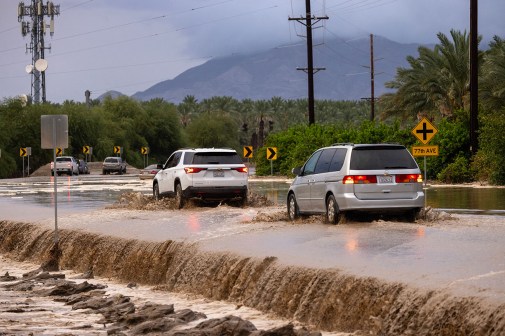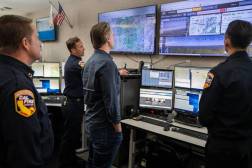Tech response to disasters starts with culture, CIO of California’s emergency services says

The technological response to natural disasters begins with a strong workforce culture, the information technology chief for California’s Office of Emergency Services said Tuesday.
“The culture of the organization is that everybody participates and supports each other,” said Carla Simmons, who directed her agency’s IT assets and actions last year during the response to the state’s deadliest and most destructive wildfire season on record. “There are so many problems and needs. What is helpful is that most of my IT staff is they are not only technically very good, they are innovative.”
Simmons, appearing at StateScoop’s California Innovation Summit in Sacramento, praised her 16-person staff while recounting how it responded to 2018’s fire season, including the Camp Fire. The blaze, which began Nov. 8, went on kill 86 people and torch 153,000 acres across Northern California, making it the worst wildfire in the state’s history. Nearly two months after it was brought under control, Simmons‘ IT team continues to support 14 temporary outposts in the affected area, she said.
During a disaster like the Camp Fire, Simmons‘ office is depended upon to outfit emergency responders from OES and other agencies with the tools they need to address the situation and get people out of harm’s way, she said. It’s a task that requires a great deal of collaboration with other California agencies, especially the Department of Technology.
“We’re a small IT organization, but in a matter of days we might have to provide 500 laptops,” she said. “I think it takes a different set of skills to have a workforce that can put together all the different pieces of equipment and go out to a remote location and establish IT services in three to five days.”
After a historic season that claimed 104 lives and left 1.7 million acres scorched across the state, California is increasingly looking for technology-driven solutions to its wildfire issues. Simmons mentioned she has looked at new applications that use satellite mapping and predictive analytics for spotting fires. Other agencies have also scrambled in how they respond to fires, including the state Department of Health and Human Services, which developed GIS-powered maps to help it figure out which hospitals and other facilities need to be evacuated.
The 2018 fires also prompted Gov. Gavin Newsom, who was sworn in Jan. 7, to use his first full day in office to order the state government to revise its technology procurement processes with the specific goal of attracting more industry proposals to combat the persistent blazes.
“There is a pressing need for the state to identify innovative and sustainable solutions to address the state’s challenges of severe wildfires and degradations of forest health,” Newsom’s order read.
OES and other state agencies are also convening a conference in March dedicated to developing wildfire-fighting technologies.





